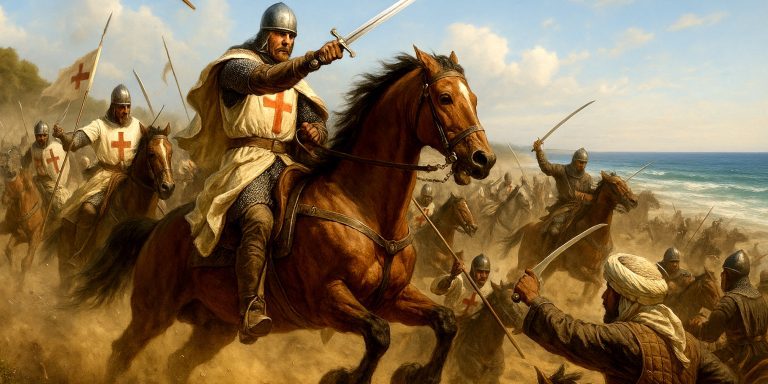
The image of the medieval knight is one of chivalry, courage, and skill with the sword. These figures, often caught between myth and history, were not only warriors but also cultural symbols. Across Europe, a handful of knights and swordsmen became renowned for their prowess in battle, leadership, and reputation. This article explores some of the most celebrated individuals, separating fact from legend where possible, and examining the qualities that made them stand out.
William Marshal, 1st Earl of Pembroke
Often hailed as the greatest knight of the Middle Ages, William Marshal (c. 1147–1219) served five English kings and rose from a landless knight to one of the most powerful men in the realm. He was famed for his skill in tournaments and his loyalty in war. His martial ability was matched by political acumen, and he played a pivotal role in the negotiations that led to the Magna Carta. Contemporary chroniclers, including Stephen Langton, praised him as “the best knight who ever lived.”
Notable Traits:
- Exceptional tournament record
- Served as regent of England for Henry III
- Fought in over 500 battles and melees
Bertrand du Guesclin
A Breton knight and constable of France, Bertrand du Guesclin (c. 1320–1380) became a central figure in the Hundred Years’ War. Known for his strategic mind and guerilla tactics, he proved that battlefield success relied on more than brute strength. His leadership helped reclaim French territories from English control.
Notable Traits:
- Expert in unconventional warfare
- Rose from minor nobility to constable of France
- Loyal to Charles V of France
El Cid (Rodrigo Díaz de Vivar)
El Cid (c. 1043–1099) is a legendary Spanish knight whose life straddled the line between Christian and Muslim Spain. A formidable commander and swordsman, he served both Christian and Muslim rulers during the Reconquista. While his story has been romanticised, particularly in the epic poem El Cantar de Mio Cid, historical records confirm his military skill and influence.
Notable Traits:
- Fought for both Christian and Muslim rulers
- Captured Valencia and ruled it independently
- Wielded the sword Tizona, now preserved in Spain
Sir John Chandos
A close companion of the Black Prince, Sir John Chandos (c. 1320–1369) was a key English commander during the early phases of the Hundred Years’ War. Celebrated for his bravery and honour, he played a decisive role at the Battle of Poitiers and was instrumental in negotiating the Treaty of Brétigny.
Notable Traits:
- Knight of the Garter
- Skilled diplomat and battlefield leader
- Died in combat during a minor skirmish in France
Geoffroi de Charny
A French knight and author, Geoffroi de Charny (c. 1300–1356) is remembered not only for his martial skill but for his writings on chivalry. His book, The Book of Chivalry, remains one of the most respected medieval treatises on the code of knighthood. He died heroically at the Battle of Poitiers, defending the French standard.
Notable Traits:
- Author of The Book of Chivalry
- Embodied the chivalric ideal
- Custodian of the Shroud of Turin (according to tradition)
Jan Žižka
A Czech general and war hero of the Hussite Wars, Jan Žižka (c. 1360–1424) was never defeated in battle. Despite losing both eyes over the course of his life, he continued to lead with tactical brilliance. His use of war wagons and disciplined infantry tactics was ahead of its time and influenced later European warfare.
Notable Traits:
- Inventive military tactics
- Fought for religious reform and national independence
- Continued to lead after going completely blind
Swordsmanship and Chivalric Skill
The sword was central to a knight’s identity. European martial traditions varied, but the longsword and arming sword were most common. Knights trained from a young age, honing skills in both mounted and foot combat. Manuals like Fechtbücher in Germany or Fiore dei Liberi’s Italian treatises give us rare insight into the techniques used by master swordsmen. The ability to fight effectively while adhering to codes of honour was as important as strength or speed.
Legacy and Cultural Impact
The legacy of these knights goes beyond military history. They influenced literature, law, and ideas of national identity. Figures like William Marshal became the subject of detailed biographies, while others, like El Cid, entered legend. Their reputations were shaped by both their deeds and the chroniclers who recorded them.
The Seven Swords Takeaway
The greatest knights and swordsmen of medieval Europe were complex figures navigating the shifting loyalties, politics, and ideals of their age. Some became icons of chivalry, others practical commanders. All, however, left their mark on the history of European warfare and culture.



